 |
| The view from the Jack Rabbit Hill winery |
Colorado is a very unique winemaking state. Despite possessing several microclimates allowing myriad grape varietals to be successfully cultivated, our burgeoning wine success has been discovered by a shy minority. Wine aficionados and cutting edge foodies seem to be those ‘in the know’ embracing the quality of the wine for its award-winning merit; not merely due to the novelty of it being Colorado local. Our production is meager compared to more well-known wine regions though the quality will stand shoulder to shoulder against some of the best. Is all the wine great? No. There is variability winery to winery however after tasting almost 100 wines a few weekends back while at a Drink Local Wine conference and tour of Colorado’s wine country, I could easily walk away with several mixed cases of Colorado wine as equal additions to those bottles already housed in my international wine cellar.
Tasting wine of course is paramount however I have found spending time with winemakers and in their tasting rooms fills in a picture of a wine region much more three dimensionally. Last week I did just this. Two action-packed days in Colorado’s wine country. Approximately 80-90 wines tasted, 8 winemakers met. It was an excursion too good not to share.
On a day that began feeling much more like summer than late April, we wound up a steep gravel road in the North Fork Valley to the crest of Redlands Mesa and the home of Jack Rabbit Hill Farm. The mere description of this winery had my heart beating a bit faster as it spoke to things of which I’m passionate; organic, biodynamic growing. For those unfamiliar with biodynamics, it is a concept founded in the last century by Austrian writer/educator/activist Rudolph Steiner and simply put it provides a full circle system of sustainability in growing by ensuring a diversified, balanced farm ecosystem generating health and fertility from the farm itself. Everything has a purpose and role in the landscape toward the end result. What would that look like? At Jack Rabbit Hill Farm by example I noted mobile chicken coops where the chickens walk down the rows of grapes in the vineyard eating bugs (pests to the grapes), fertilizing as they go. There are bees at the farm which would aid in pollination, making honey that might be used in some of the farm’s products.
Jack Rabbit Hill Farm is a vineyard, winery, distillery and hops farm technically in Hotchkiss Colorado. I found many of the winemakers in this region are not from long lineages of winemaking families but more often high tech escapees who at the pinnacle of their money making days opted for a different life; Lance and Anne Hanson, the proprietors, are no exception. Certainly Delta County wineries demonstrate ‘lifestyle winemaking’. No big showy tasting rooms, a more relaxed integrated winemaking effort rather than being beholden to ‘the man’.
After driving by pastures of sheep, a cow or two, winding through the hops field and vineyards, we were first greeted by breathtaking views and two enormous Great Pyrenees puppies, Stella and Luna, responsible for running off the coyotes who have been consuming the lambs on the farm. At three months old these pups are more the size of squat ponies in fur coats than dogs and there is no doubt they are efficient at their role. Lance and Anne Hanson greeted us warmly as though we were old friends coming for a visit rather than writers coming for a peek at their works.
Their operation is purposely small and focused on batch production both of the wine and the distilled spirits. While most would wander to their garage or out shed for garden tools a quick swing of the door revealed their winemaking operation under the house and the mini still responsible for their successful Peak Spirits and CapRock spirits distillation.
 |
|
Winemaking equipment (above) and Lance Hanson in the distillery shed
|
Lance, a warm, friendly, passionate guy lead us to their ‘tasting room’ (the kitchen table at this time of year; the front porch when the weather warms) to explain the tenants of biodynamic farming and to let us taste their wares. Gazing out the windows at the West Elks Mountains over the barely budding vineyard it’s no question why the Hansons have chosen this life. They would be considered a ‘craft farm’, producing 1,500 cases of wine annually with no desire to get bigger.
 |
| Lance Hanson, Jack Rabbit Hill winemaker and distiller |
Jack Rabbit Hill’s niche is artisan restaurants along the Front Range. Their 5 gallon Wine Tapistry wine keg holds the equivalent to 2 cases of custom-blended wines, making for a convenient, fresh ‘by the glass’ option for restaurants which has been extremely popular. An appeal about Jack Rabbit Hill is certainly the devotion to the ‘green’ aspect of their methods though Lance is quick to point out if the wine isn’t good, no one cares that it is organic or biodynamic. I feel the same goes for the regionality of a wine. Is it cool that Colorado has over 100 winemakers and an actual ‘wine country’? Of course, but only if the wine is good.
The majority of their wine grapes are grown on their biodynamic, organic farm with the exception of some Riesling grapes grown 2 miles away on the Dill Farm (which is organic) and Mesa Winds Farm who grows their Pinot Gris grapes (also organic). Jack Rabbit Hill wines span several grape varietals grown in their vineyard including Chardonnay, Riesling, Vignoles, Pinot Noir, Meunier and Foch. If they can’t grow it themselves, they don’t want to make wine with it.
We tasted a breadth of their wines from the estate grown Mitzi’s Riesling 2011 on tap to the estate-grown M & N (Pinot Noir and Meunier) 2009 as well as some of their spirits. I found Lance to be very down to earth and scrutinizing about his wines, not aloofly trying to pimp them beyond their merit as one can experience at some tasting rooms. His wine is good, making it an easy conversation. I enjoyed their wines (and the spirits were great) and I did love them more for their process. For me interwoven with the wine quality is the thoughtful methodology embodied in their process, their commitment to quality not volume and the ambiance of the farm. Lance commented wine is an ‘atmospheric, mood thing’ and he’s right. We all remember moments attached to experiencing certain foods or wine. Jack Rabbit Hill Farm has left an imprint on me in this way. I will seek out their wines and remember the farm’s striking landscape in every direction, the bio diversity in their little heaven on top of the mesa, the relaxed feel of our tasting and the warmth Lance and Anne add to everything they touch. Incidentally they were nominated for a 2012 James Beard Award for Outstanding Wine and Spirits Professional. Not too shabby for a relaxed little winery I’d say.
 |
|
View from Jack Rabbit Hill’s ‘tasting room’
|
Winding back on the graveled back roads with miles in between properties we arrive at Leroux Creek Vineyard. Leroux Creek is a vineyard, and winery but also a Bed and Breakfast lending itself to a Southwest-meets-Mountain-Mediterranean feeling. One enters what was originally a home that has been adapted to the Bed and Breakfast with a large open kitchen and sitting room all facing a full windowed wall showcasing the sprawling vineyard and backdrop of the soaring West Elks peaks.
Yvon the proprietor, grape grower and winemaker is also a fantastic chef. He is French and as many in this area seem to share, bears a winding path to have happily ended up at Leroux where I suspect he’ll stay put. Yvon grows two hybrids in his vineyard, Chambourcin and Cayuga, which are grown organically. He also draws from the local fruits in the summer to produce some fruit wines. To enjoy Yvon’s wines he prepared a sumptuous lunch all from locally sourced produce and meat, freshly made bread and a dessert. Sourcing local produce is not an easy feat in April in the Rockies but you’d never know that from the feast.
We were joined by Marley and Linda Hodgson (owners) and Jim Nielsen (General Manager) from Smith Fork Ranch, an esteemed guest ranch a stone’s throw away from Leroux. The Hodgson’s were long time New Yorkers who visited Colorado frequently with their family over the years. When the opportunity presented itself to purchase the guest ranch they did, applying considerable reconstruction and remodeling to yield it an extraordinary luxe mountain experience worthy of mention in Andrew Harper’s ‘Hideaway Report’ among countless other publications. The Hodgson’s and Jim Nielsen are yet more examples of non-native Coloradoans heeding the call of this extraordinary area not only making it home but investing in making it the best it can be for all who live there or visit.
Rounding out our lunch group was the sweet and charming Pat Frazier from Peace and Plenty Farm, a local biodynamic farm growing a variety of produce, as well as culinary and medicinal herbs. The sense of community between these people is palpable. All from varying paths they are now tightly knit and supporting of each other’s endeavors. Pat spoke of being involved in the harvest at Leroux and different foraging and harvest rituals they have all enjoyed together. There is an easy comfort between them making me want to move in.
 |
|
Yvon, Leroux Creek Vineyard’s proprietor
The view from one of the inn’s guest rooms
|
In listening to Yvon speak he (as does Lance Hanson) represents the passion of his craft over a drive to market his wines. He’s firmly embedded into the diverse local community and exercises all the landscape has to offer for growing cultivated crops as well as seasonal foraging. The tone was relaxed and frankly much more European feeling at his little ‘American Provence’ than the strict schedule we had to keep. Unlike many tasting rooms our time was not filled with intense technical wine chat but rather Yvon providing an overview and letting our palates take an experiential journey to embrace his wine in partnership with his beautiful food. The multiple ‘where can this wine be purchased?’ inquires were all that needed to be said.
Yvon offers several culinary experiences at the Inn. He hosts cheese making workshops, the opportunity to work with an accomplished baker, involvement with the vineyard, wine tasting and food preparation. It is the opportunity for a rich culinary sojourn that should not be missed.
Our last stop was at Alfred Eames Cellars residing in the West Elks AVA (American Viticulture Area, a formally designated wine growing region which in Colorado there are two; wine is grown outside the AVA’s as well), 3 miles south of the charming town of Paonia. We arrived to a familiar casual tone. Eames emerged from his house mid lunch to open up the wine cellar and no frills tasting room. I loved that his cellar and tasting area are in the middle of his homestead and small vineyard, feeling it lends itself to getting a bead on what he and his wine are about.
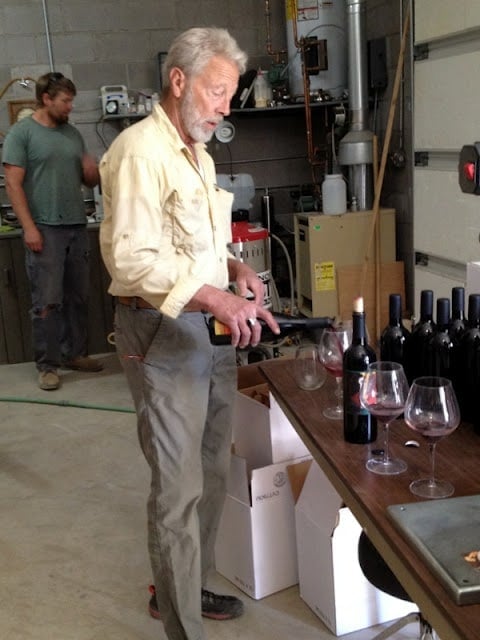 |
|
Eames, winemaker for Alfred Eames Cellars
|
Eames learned to make wine in the Rioja region of Spain in 1964 and continued to make wine on his own for 30 years following. In 1994 he planted an official small vineyard of Pinot Noir grapes and opened Alfred Eames Cellars in 1999. Eames only makes red wine not drinking white wine himself.
His aging cellar is all housed in a masonry building facilitating temperature stability and we found it cool and fabulously musty-smelling on this surprisingly hot day. I wrote in my notes ‘not a fussy winemaker’ and Eames is not as it relates to the presentation of his wine and I suspect in how he lives his life. Perhaps most strongly of all the winemakers we visited this day, Eames exudes the relaxed ‘what you see is what you get’ essence of this winemaking region. They are committed to their craft in a down to earth manner. I suspect Eames is not all about the sale but rather takes pride in the quality of his own work that I would guess he measures against pretty strict personal standards. Our tour and tasting of two of his wines was full of information and very low key. The wine glasses were not neurotically polished and no high gloss multi page brochures feverishly passed out. His Tempranillo was fantastic and I could have sat the rest of the afternoon with a bottle listening to what I suspect would be some interesting life tales from Eames under the shadow of the West Elks mountains.
 |
|
Eames uses these glass jugs for a number of functional tasks and they add visual panache to his celler as well
|
I loved this winemaking region and the people we met. Though our day was spent traversing the hills and graveled roads there are other wineries in between our stops. As I mentioned the tasting hours are not as formal and it’s always best to call first. Here is a link to the West Elks AVA wineries as well as Delta/Montrose wineries. I think a GPS would be incredibly helpful whether stand alone or a mobile phone application. For Colorado locals or wine lovers in general, a trip to this region of Colorado’s wine country will not disappoint for the wine, people and the terrain.
My thanks to Drink Local Wine and the Colorado Wine Industry Development Board for the opportunity to dive into Colorado’s wine country up close. My special thanks to Kyle Schlachter for construction of our comprehensive itinerary and ensuring our schedule adherence. I’m sure at times it was like herding cats.

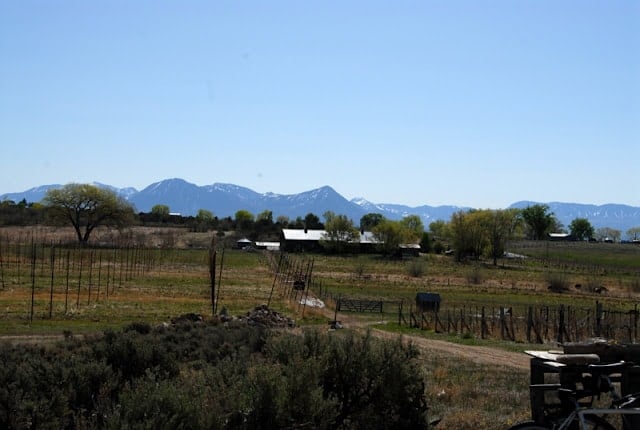

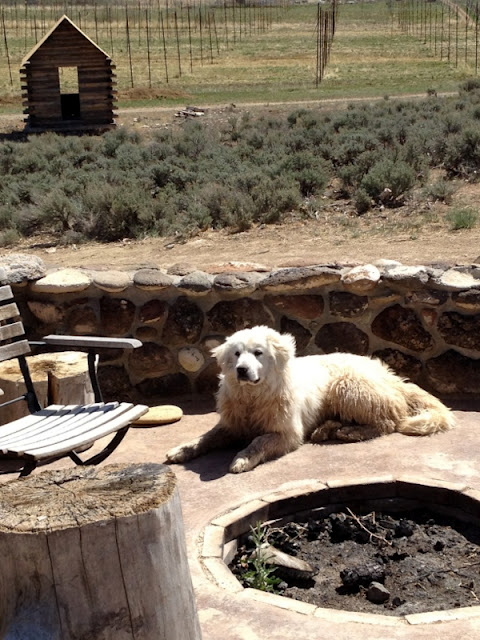










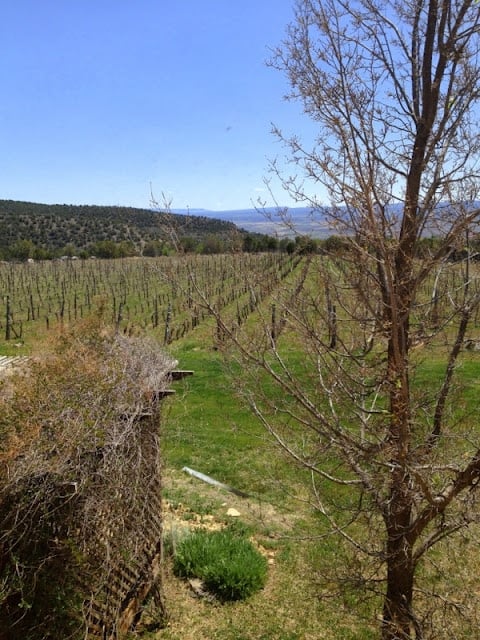


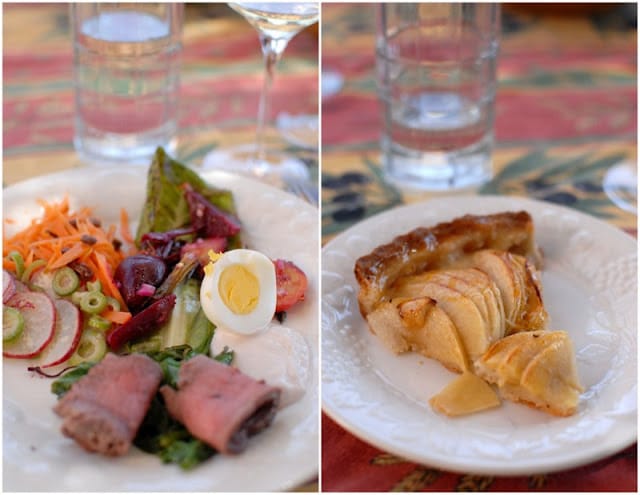


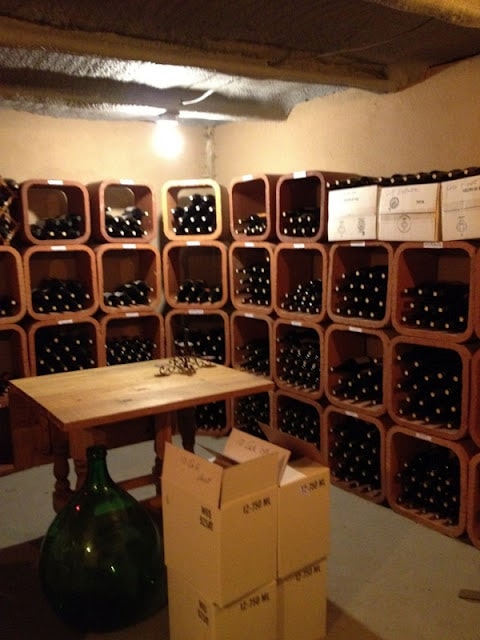
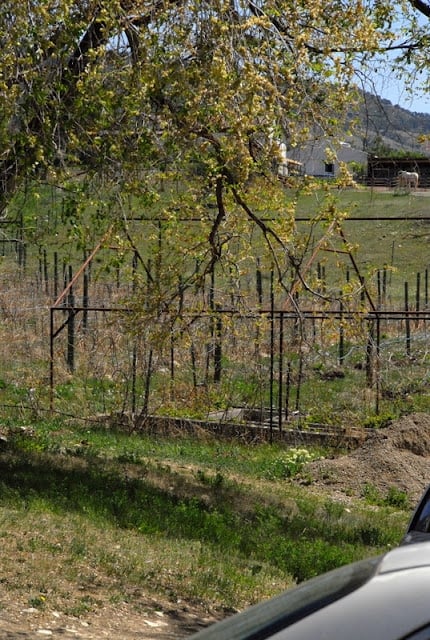


Grace giaimo says
Yes I would love to know where I can find or buy the wine jug .
Toni Dash says
Grace I would suggest scouting wine making supply sources online or contacting Alfred Eames Cellars to find their supplier.
Laura says
Sounds like my dream get-a-way! Like getting to step into the best of the wine-of-the-month club! Maybe if I put your website up on my husband's computer, he'll get the hint! 😉
Sarah says
Beautiful! Exciting to have a growing region like this in CO!
sarah @ two tarts
Boulder Locavore says
Sarah I thought of you and Dulce and your desire to bike with tots through the wine country. This was Day 2 of our trip and Day 1 would be exactly to your liking. I'll be doing a post about it soon but the wineries are much closer together and one can pop between them driving or biking.
The North Fork Valley was extraordinary. I would not be productive living there I'm afraid. I would just sit and stare at the landscape all day every day!
Anonymous says
great story, Toni! i'm so happy to have finally met with you and gotten a chance to share such a remarkable trip with you. here's to Colorado wine (and wine in general)!
kendra
Boulder Locavore says
I agree fully! You were such a fabulous addition to the trip; wine-knowledgeable, wildly creative palate and hilarious. Can't wait to get together soon!